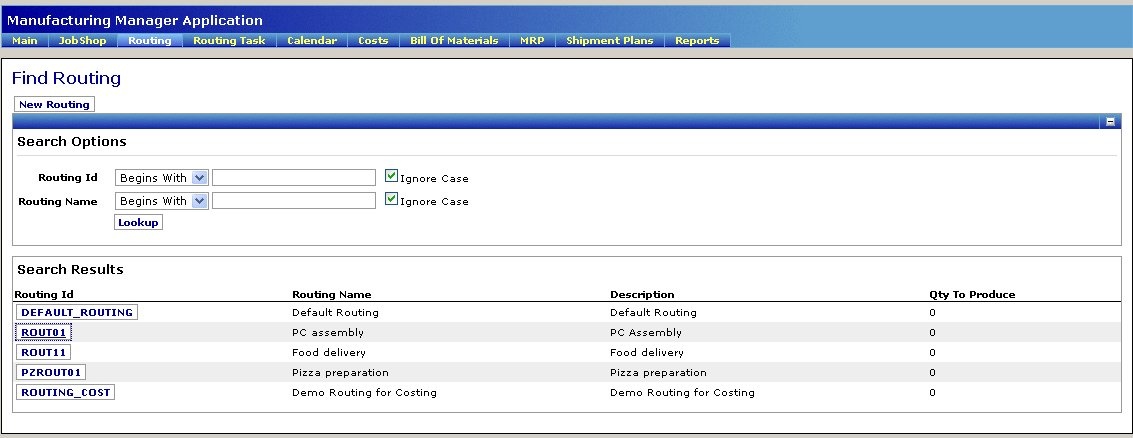...
- Required for SO(Sales Order) - 1. This is telling us that this Sales Order requires 1 of this item(10010).
Wiki Markup Wiki Markup - On Order - 0. Currently no units are on order or expected to arrive anytime soon.
- In Production - 1. As I mentioned earlier, configurable goods require some type of manufacturing or production.
- Unplanned - 0. *I am not sure what this indicates as of 20090324*
...
If you click on the Manufacturing webapp toolbar on the top of the screen and select "Lookup" you will notice several listings of Production Runs.
Wiki Markup
There is quite a bit of information on this page. For now, scroll down to the "Tasks" screenlet. You will notice three tasks: Stock Out, Assembly, and Test. Thinking back to the Dell anaolgy, this fits in perfectly. You will notice IDs next to each of these tasks(10011, 10012, and 10013). These are the workeffortIDs for each of these tasks. They are children of the production workeffortId 10010 for the production run. We will look more at these later. There is a Fixed Asset column which corresponds to the area or group that this task will occur. This could be a electrostatic free room or production assembly line or whatever. The setup and run times are how long it is estimated for the task to be performed. David has a very good explanation in the confluence about these so I won't go into them. *link David's explanation/example on these*.
If you go down to the next screenlet called Materials you will see that there are four listings for the Stock Out task. You will notice that these correspond to all of the configurations we added when we made the order. Basically this means that this task requires these items to complete. Keep in mind that in other situations, materials could be required by multiple tasks.
Now, let's turn our attention to the origin of the PC assembly task. If you click on "Routing" at the top of the screen the routing processes will be displayed.
The Production of our PC uses the "ROUT01" routing process. If you click on the "ROUT01" hyperlink and then the "Edit Routing Task Assoc" tab, it will pull up the three tasks that comprise this production process.
These are the three that we saw above. The information for each of these can be editted by clicking on any the appropriate hyperlink.
Now to address how the framework knows to apply this production process to the configurable PC. If you click on the "Edit Routing Product Link" it will list the products that this production run is applicable.
Here we see two products: 10010 which is the PC we are in the process of building and PC001 which is the Configurable template that we built our initial order from. To see this connection, we can also view the product in the Catalog Webapp. Click on the Catalog Webapp link in the application bar. Navigate until you get to the "Product For: Configurable PC [ID:PC001] page.
There are several things I would like to point out here. If you click on the manufacturing tab you will see that the "ROUT01" routing is listed.
If you click on the Work Effort tab you will also see "ROUT01" listed.
This tells us that the "ROUT01" production process is linked to the PC001 product through manufacturing and workeffort.
Next, if you click on the Associations tab you will see that Product 10010 is associated with PC001 as a Configurable product Instance.
Click on the Main tab in the Catalog Manager Application and enter 10010 in the Edit Product form field to pull up the 10010 product page.
...









